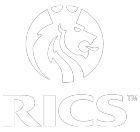Science Based Targets for Emissions Reduction
Science Based Targets are being adopted by companies across multiple sectors as the basis for setting long-term goals. But how relevant and useful are they?
We’ve recently been advising a number of real estate organisations and funds on their responsible investment strategies and, as part of that, their approaches to target setting for energy consumption and carbon emissions reduction. Knowing where to set the bar is a often a primary concern. Historically, organisations have generally set themselves relatively arbitrary targets based on intuitively manageable goals. This is all well and good, up to a point, but does not necessarily mean that genuinely sustainable levels of carbon emissions will be achieved. If they are, it’ll more likely be by luck rather than judgement.
Increasingly, and catalysed by COP-21 and the Paris Agreement on Climate Change, the Science Based Target (SBT) approach is being adopted by companies across multiple sectors as the basis for setting long-term goals for greenhouse gas emissions reductions. Much has been made of their relevance, complexity and usefulness, with opinions quite broadly spread.
In the first of two blogs which we’ll publish in quick succession, we discuss the various methodologies which exist under the umbrella of SBTs for greenhouse gas emissions reduction and the background to their application.
Methodologies
The Science Based Targets Initiative (SBTI) – a joint initiative between CDP, UN Global Compact, World Resources Institute and WWF – defines such targets as:
Targets adopted by companies to reduce GHG emissions are considered “science-based” if they are in line with the level of decarbonisation required to keep global temperature increase below 2oC compared to pre-industrial temperatures, as described in the Fifth Assessment Report of the Intergovernmental Panel on Climate Change (IPCC).
There are, however, multiple methodologies for setting Science Based Targets each with their respective strengths and weaknesses. Some of these are bespoke to individual organisations, such as those developed for their own purposes by BT Group, Ford Motor Company and Mars, although this does not preclude other organisations from adopting the same methodology because they have been published on an open source basis. Others are particular to defined geographies, such as the 3% Solution which was developed specifically for the US.
More widely used open source versions are also available, although most of these are based on normalised intensity metrics based on the economic output of organisations. The GEVA (Greenhouse Gas Emissions per unit of Value Added) method, for example, is developed from the principle of reducing GHG emissions by 5% per year per unit of GDP created by individual corporations, based only on Scope 1 GHG emissions (thereby excluding emissions associated with electricity consumption or of supply chain activities). The C-PACT method, developed by Autodesk, and the Context Based Carbon Metric, developed by the Centre for Sustainable Organizations, similarly use an economic output normalisation metric. A key disadvantage of these methods from a real estate owner’s point of view would be the distorting impact of commercial property value volatility.
The Sectoral Decarbonisation Approach (SDA) is the most recently developed and arguably the most complex methodology, but it is also the most applicable to real estate organisations in our opinion. It provides sector-specific emissions reduction pathways, with intensity measures premised on more useful and meaningful measures. For real estate, the normalisation approach is based on a CO2/m2 of floor area metric, with a carbon intensity pathway established of 55 percent by 2050 from a 2010 baseline (premised on a CO2 budget allocated to the sector by the SBTI which is considered proportionate in the context of the wider economy, yet in line with the goal of limiting global temperature increases to 2o above pre-industrial levels). The scope of the emissions to which SDA-based targets should be applied for real estate encompasses Scope 1 & 2 emissions, thereby including energy use associated with space heating and cooling, water heating, lighting, appliances (HVAC), and miscellaneous equipment (such as office equipment and other small plug loads in the service sectors).
Notably, the one commercial real estate owner that has developed a SBT to date, Land Securities, has used the SDA method with a target of achieving 40% reduction in the carbon intensity in property under management for at least two years by 2030 when compared with a 2013/14 baseline. This is deemed by Land Securities to be consistent with the trajectory needed to achieve the 80% reduction in carbon emissions in property required by 2050, and is complemented by a target of reducing energy intensity by 40% by 2030 in the same buildings.
However, it is important to remember that the SBTI has appropriated words and formed a definition to suit its own agenda. There is no reason why “science-based targets” should mean anything to do with limiting global warming to below 2oC. Indeed, the principle of science-based target-setting can be applied to a much broader range of issues.
In our next blog, to follow this in quick succession, we discuss alternative and broader frameworks within which appropriate science-based target-setting can be made and some of the key SBT considerations for real estate owners.














